We never knew a FOX 36 could look skinny until FOX dropped the FOX 38. With the distinguished FOX 36 now downgraded to all-mountain duties, is the pumped-up FOX 38 the new king of enduro, or is it 2 mm too far?
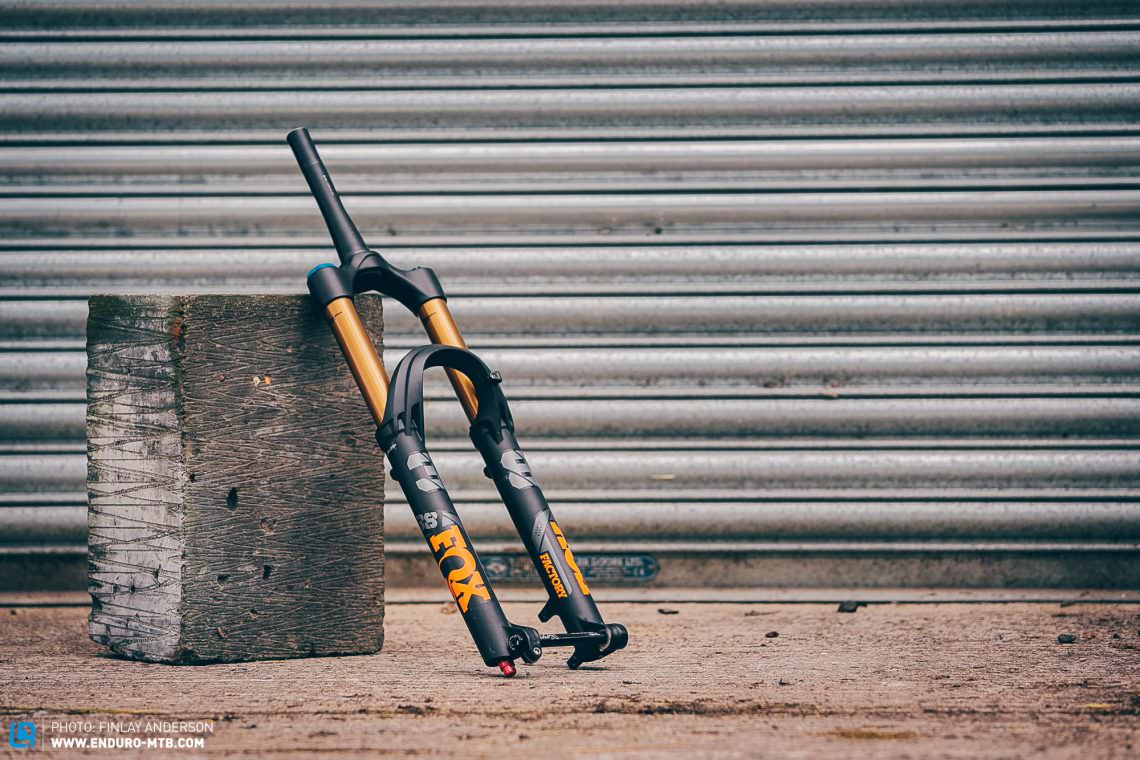
When FOX released their 38 platform it caused quite a stir. Not just because of the new tech but also because the popular 36 chassis was downgraded to an all-mountain fork (in shorter 150–160 mm travel options). This was a blow to other brands using 35–36 mm platforms – were their forks no longer burly enough for enduro? Bigger, stiffer and with new internals, the FOX 38 is now the brand’s big-hitter single crown fork. It relies on 38 mm stanchions and will be available in Factory, Performance Elite, Performance, and E-Bike models with GRIP2 and GRIP dampers, in 27.5” and 29” models. FOX now also use only tapered steerers on their gravity forks, with no 1 ⅛” steerer option. Besides the extra-fat stanchions, the fork features a new rounded arch and internally ovalised steerer tube for increased strength and stiffness. Internally the FOX 38 incorporates new air channels that allow air and oil to migrate more easily inside the fork, helping lubrication and spring performance. Bleed ports on the back of the lowers allow for equalizing pressure inside the fork with atmospheric. The air spring piston now sits inside a floating air sleeve instead of the fork stanchion, allowing the fork to flex without binding and decreasing seal head friction. The addition of a sleeve means the inside diameter is reduced, and the 38 uses the same piston head size as a FOX 34. The narrower sleeve means the spring requires slightly higher pressures, however, the reduced seal diameter also reduces seal friction. FOX have revised the GRIP2 damper, adding VVC (Variable Valve Control) to the high-speed compression circuit. The fork also features a new floating axle design to maintain perfect alignment of the lowers when a wheel is installed. The fork weighs 2.32 kg (our 170 mm 29er FACTORY model) and costs between € 1,259 and € 1,589. FOX claim the 38 model has a 31% increase in transverse stiffness (bending), is 17% stiffer fore and aft (think hard braking) and 38% torsionally stiffer than a 36. The new 38 is certified for use with a 230 mm front rotor.
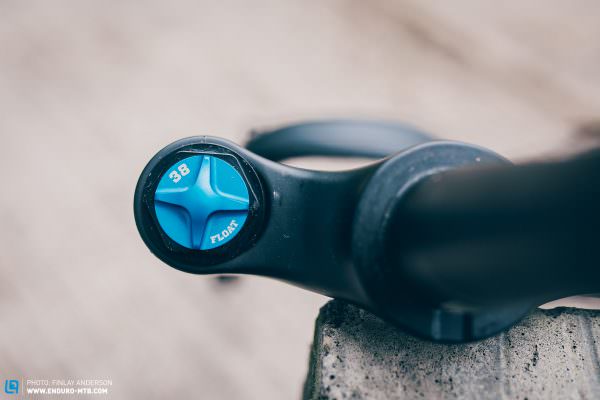
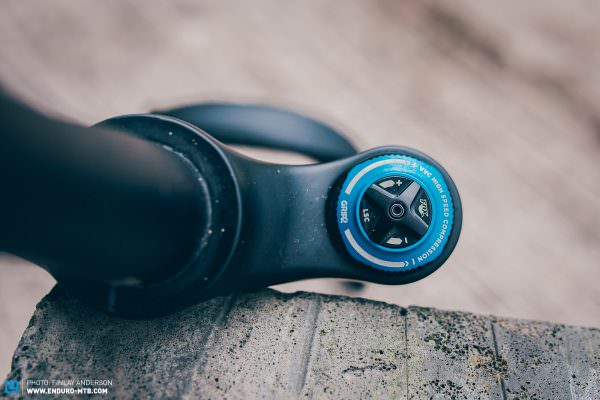
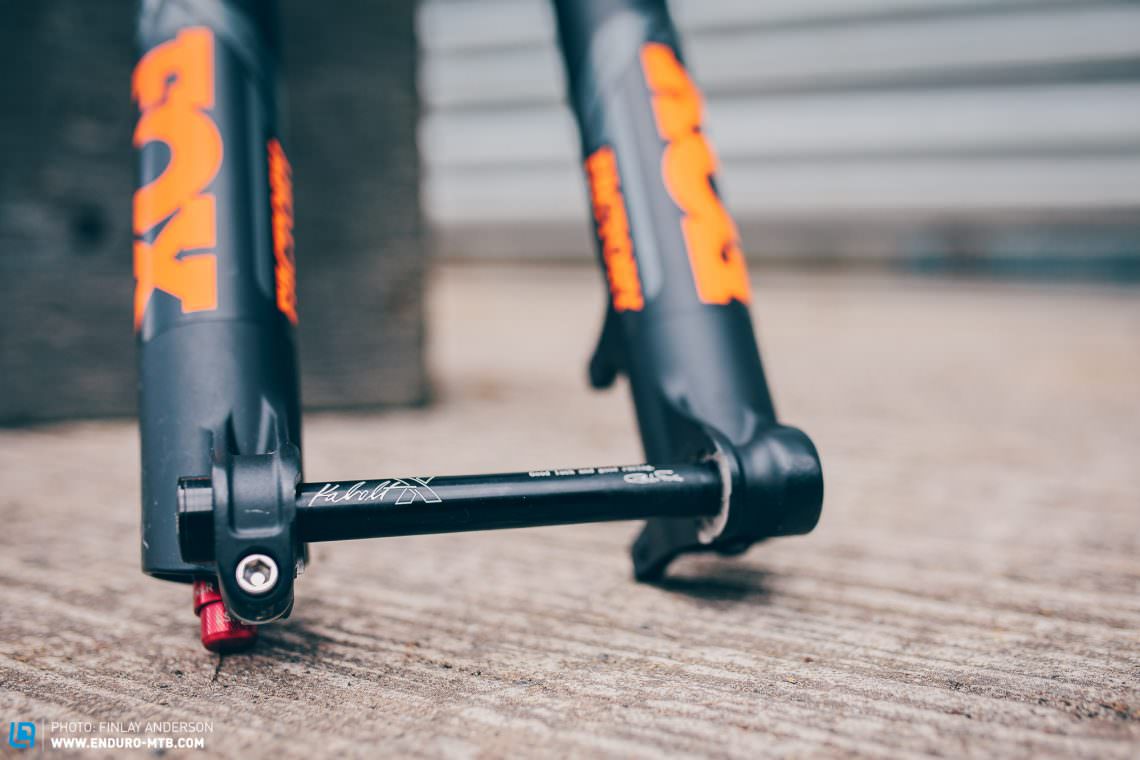
Setup of the FOX 38
The FOX 38 is a highly tunable fork featuring 16 clicks of low-speed compression and 8 clicks of high-speed compression, as well as both high- and low-speed rebound adjustment. You can also add volume spacers (up to 6 depending on the travel) to tune the spring rate. Using the recommended settings from FOX’s tuning guide delivered a good setup out of the box, though it was lacking a little in grip and more suited to fast bike park riding. The compression circuit is very supportive and we were able to run less low-speed compression than recommended to maximise small bump sensitivity while balancing the end stroke progression using the high-speed compression adjuster to avoid hard bottom outs. The fork ships with 2 tokens but we found our best setup with one token and 2–3 psi more pressure in the spring than recommended for our weight.
The FOX 38 2021 on the trail
On the trail, we were instantly impressed. We were already fans of the smooth performing FOX 36 but on the hardest terrain, the FOX 38 is in a different class. Despite the numerous adjustments of the fork, we found we were quickly able to get a really good setup that offered confident support and huge amounts of grip. The FOX 38 reminds us of the bigger FOX 40 in the way that it makes light work of the roughest terrain. Slamming through rocks, the front wheel is worked hard but you don’t feel it through the bars. The advantages of the stiffer chassis are most obvious when the fork is loaded heavily from one side, where the air spring remains very sensitive with no binding. We were surprised to find we could hold higher lines through fast off-camber roots without the bike losing traction, instead velcroing you to your line. Big hits are handled well too. If you overcook a jump and land flat, the expected thump never comes. Instead the 38 compresses smoothly to the end of its stroke without ruining your flow. Very light riders running lower pressures may struggle with the high damping of the rebound as we found that our 80–90kg testers were running it nearly fully open. We were also a little disappointed that the low-speed rebound adjuster clicks are VERY hard to feel, especially compared to the positive feeling detents of the other adjustments. We also experienced some issues with creaking from CSU on one of our test forks but FOX were quick to replace our problem fork with no further issues.
The advantages of the stiffer chassis are most obvious when the fork is loaded heavily from one side. The air spring remains very free with no binding, making the fork even more sensitive.
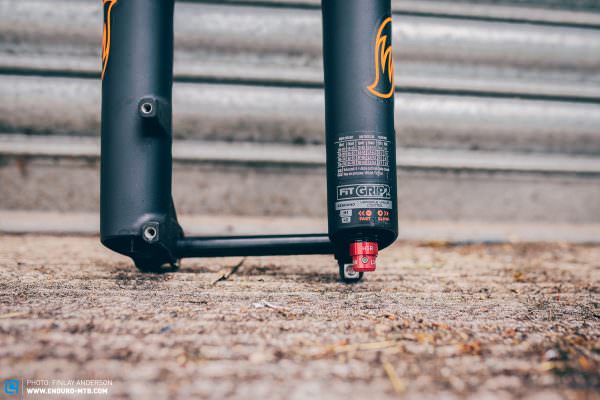
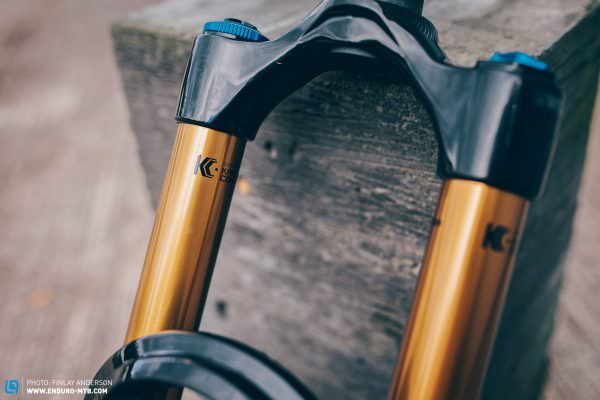
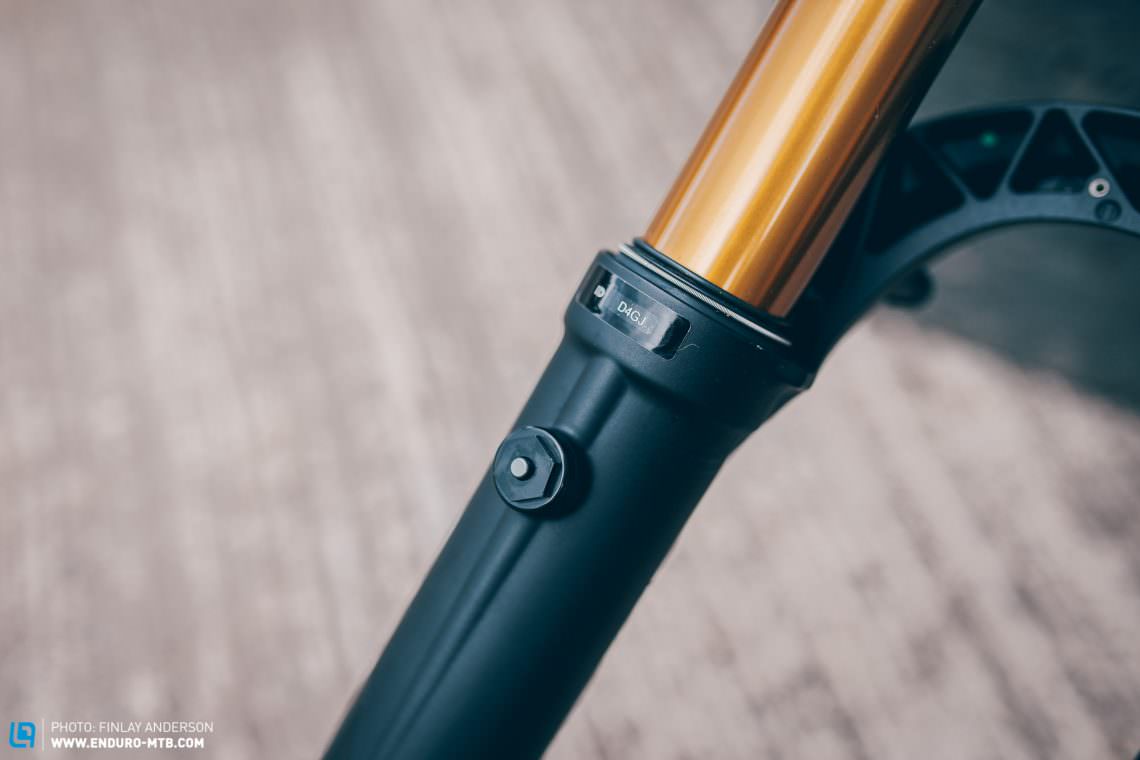
How does the FOX 38 Compare to the other forks in this test?
After a little setup time, we found the FOX 38 allowed us to ride faster and in more control than all the other forks in this test, Going back to back on the hardest terrain it was easier to open up gaps on other riders on the FOX 38, as if the volume of the trail had been turned down a notch. We found that compared to the FOX 36 and RockShox Lyrik, we were able to push harder, brake harder and trust rooty landings more. It’s not as stiff feeling as the ZEB instead it retains a hint of compliance that feels easier on the hands after long stages. However, it is a VERY expensive fork and we would still recommend saving some money and going for the Lyrik if you’re rarely in the bike park.
Conclusion
The new FOX 38 is more than just a beefed-up 36. Instead, it feels more like a mini 40 with sublime damping and support. Running 170–180 mm travel, it’s the ideal complement to the latest hard-hitting, gravity focussed 29er enduro and eMTBs. Overall, for those looking to push their riding very hard in the bike park, the FOX 38 is the best performing enduro fork on the market we’ve currently tested, taking the Best In Test.
Tops
- amazing stiffness/performance balance
- next level grip and support
- super sensitive
Flops
- one of our forks creaked
- very high price
- more involved setup
Other 38 models
The 38 comes in four different versions. The 38 Factory tested here is accompanied by a E-Bike version that shares the same technologies. One level down, the € 1,469 Performance Elite model that, shares the same features except the Kashima-coated stanchions. On the trail there is an imperceptible performance difference between the different stanchion finishes. As the 38 is the go-to enduro option from FOX, there is no FIT4 model – much appreciated. The entry into the burly FOX 38 world is the Performance model, which comes with the GRIP-damper and without the push-button air bleeders at €1,259.
For more information, check out the Manufacturer’s website. If you want to learn more about mountain bike forks and see how the FOX 38 stacks up against the competition, check out our 2021 suspension fork group test!
All forks on test: DVO Onyx SC D1 | FOX 36 2021 Grip2 Factory | FOX 38 2021 Grip2 Factory | Manitou Mezzer PRO | Marzocchi Bomber Z1 Coil | MRP Ribbon Coil | Öhlins RXF36 M2 Air | RockShox Lyrik Ultimate 2021 | RockShox ZEB Ultimate
Did you enjoy this article? If so, we would be stoked if you decide to support us with a monthly contribution. By becoming a supporter of ENDURO, you will help secure a sustainable future for high-quality mountain bike journalism. Click here to learn more.
Words: Photos: Finlay Anderson









